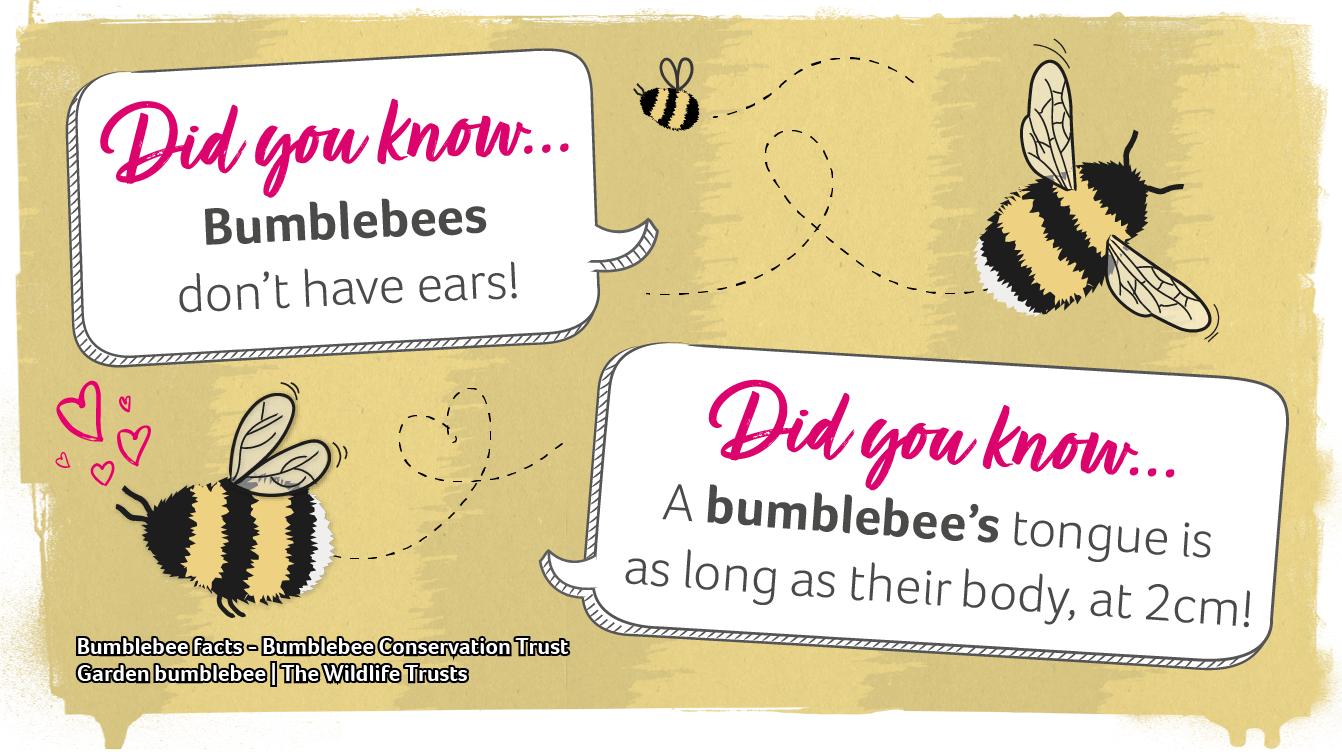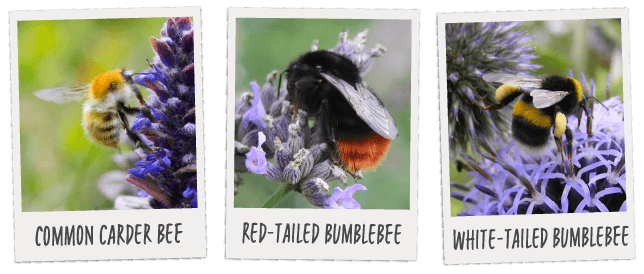17th April 2023
What do you think of when you see the headline ‘Save the bees?’ Your answer may be ‘honeybees’, or perhaps ‘honey’, because these are the images you’ll typically see in the media and social media.
The sting in the tail is that it’s not actually honeybees that need our help – because beekeepers manage hives, honeybees are not currently in decline in the UK.
We’re talking about 'bumblebees’!
Why are bumblebees important?
The little winged warriors who need our help don’t live in hives or produce honey – they live in nests of between 50-400 bumblebees for a few short months each year. We call this ‘bumblebee season’!
Aside from their fluffy, fairytale appearance, the humble bumblebee plays a vital role in biodiversity. Their super-power is to provide a vital “free-bee” service, by pollinating our food crops, and wildflowers, as well as fruits and seeds for birds and small mammals.
Plus, around 70 crops depend on, or at least benefit from, wild bee pollination – meaning, bumblebees are responsible for a lot of what we eat.
Bumblebees are multi-talented as generalist pollinators (those who visit several plants), but they are also the only bee species able to pollinate some crops, including:
- Tomatoes.
- Potatoes.
- Bell peppers.
- Chillies.
- Kiwi fruit.
- Blueberries.
Did you know?
One in three bites of food we eat on our plate is thanks to bees.
Of all the insect-pollinated crops in the UK, honeybees only pollinate between 5-15% – which leaves a massive 85-95% to wild pollinating insects, of which bumblebees are ‘star’ performers.
So, if numbers of bumblebees and other pollinators decline, the price of fruit and vegetables would drastically increase. For example, it’s estimated that it’d cost an extra £1.8 billion a year to hand-pollinate UK crops.
Five fun facts about bumblebees:
Fact 1 – They have four wings that can beat up to 240 times per second.
Fact 2 – Bumblebees fly the equivalent of us walking 10 times around the world, every day!
Fact 3 – Only bumblebees are capable of ‘buzz pollination’, producing a high-pitched buzz to release pollen trapped inside a plant (tomatoes are pollinated this way).
Fact 4 – Thanks to their smelly feet, bumblebees leave a scent on plants to let other bees know the flower doesn’t have much pollen; preventing wasted time!
Fact 5 – Queen bumblebees hibernate for up to half of their 12-month lifespan.


How do you identify a bumblebee?
If they are fat and furry, there’s a very good chance it’s a bumblebee – they come in a range of different colours, too! The best way to identify a bumblebee is through its tail colour, which falls into three groups:
- White-tailed.
- Red-tailed.
- Ginger-yellow.

See if you can identify a bumblebee at www.bumblebeeconservation.org/identify-a-bumblebee/
Bumblebee population decline
Bumblebees act as a useful and powerful indicator of the health of our biodiversity and environment. Currently, bumblebee populations are being destroyed, with their numbers and distribution declining. The 24-remaining species of bumblebee in the UK represent approximately 10% of the world’s bumblebee species.
In the last century, two UK species have become extinct and a third of the species left are in serious trouble.
Shockingly, the UK is one of the most nature-depleted countries in the world (bottom 10% of all countries), which is mainly due to intensive agricultural practice to produce more food. Landscape-scale change from areas covered with wildflowers to vast monocultures (fields containing one crop species), and using pesticides, have effectively turned our countryside into deserts for pollinating insects and wildlife. Additionally, 97% of the UK’s meadows have sadly been lost since WWII.
How you can help bumblebees
Science and conservation work have shown that there are simple things we can all do to restore thriving bumblebee populations. In restoring bumblebee populations, we can help protect our precious biodiversity from climate change and other environmental threats. This doesn’t mean introducing more honeybee hives into our gardens and countryside, however – that would be like saying in order to protect our threatened bird species, everyone should breed chickens!
If you find a sleepy bumblebee, you could gently place them onto a bee-friendly flower, for example:
- Sunflower.
- Honeysuckle.
- Wild strawberry.
- Catmint.
- Lavender.
Another way to help a bumblebee is to gently move them somewhere safe if they’re in danger of being squashed. Should you notice a bee resting for more than 45 minutes, and there are no bee-friendly flowers around, as a last resort you could offer a sugar-water mixture. To give an energy boost to a bumblebee, you can mix equal parts white sugar and warm water. Once you’ve created the sugar-water mixture, put it onto a sponge or into a shallow container, then carefully place the bumblebee next to it in a sheltered location. You can learn more about the risks of providing sugar water by clicking here.
To find out more about how you can ‘Bee the Change’ head to the Bumblebee Conservation Trust website for lots of free information, inspiration, and ‘how to’ guides. Don’t forget to listen to the Animal Friends podcast episode ‘A Walk in the Park... Bee part of the change - Understand our winged heroes’.
You can also check out Animal Friends’ ‘Tails’ of UK Wildlife campaign for ideas on how to nurture the nature in your neighbourhood!
Animal welfare blog
If you found this blog useful, why not visit our animal welfare blog to find more articles about animal at risk around the world?
From news and facts, to charities helping protect animals and the great work they do - find out more about animal welfare and those making a difference.
